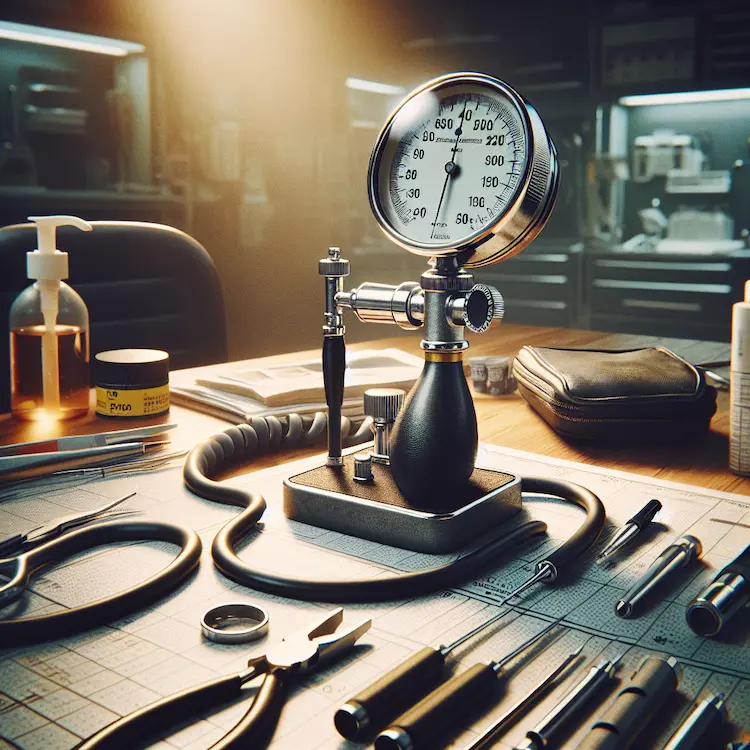Accurate blood pressure measurement is crucial for diagnosing and managing hypertension, a major risk factor for cardiovascular diseases. The sphygmomanometer, a device used to measure blood pressure, plays a vital role in this process. However, its accuracy depends on proper maintenance and regular calibration. This article explores the importance of maintaining and calibrating sphygmomanometers, discussing various methods, tools, and best practices to ensure reliable blood pressure readings.
The Importance of Sphygmomanometer Maintenance and Calibration
Proper maintenance and calibration of sphygmomanometers are essential for several reasons:
- Accurate diagnosis: Inaccurate readings can lead to misdiagnosis of hypertension, potentially resulting in unnecessary treatment or failure to identify at-risk patients.
- Effective treatment monitoring: For patients with hypertension, precise measurements are crucial for assessing treatment efficacy and making necessary adjustments.
- Public health impact: Systematic errors in blood pressure measurements can significantly affect perceived hypertension prevalence and control rates at the population level.
- Cost-effectiveness: Well-maintained devices have longer lifespans, reducing the need for frequent replacements and lowering healthcare costs.

Types of Sphygmomanometers
There are three main types of sphygmomanometers:
- Mercury sphygmomanometers
- Aneroid sphygmomanometers
- Digital (electronic) sphygmomanometers
Each type has its own maintenance and calibration requirements. While mercury devices are considered the gold standard, many countries are phasing them out due to environmental concerns.
Maintenance Practices
General Maintenance Tips
- Regular cleaning: Clean the device after each use with a mild disinfectant solution recommended by the manufacturer.
- Proper storage: Store the device in a cool, dry place away from direct sunlight and heat sources.
- Visual inspection: Regularly check for visible damage, wear, or leaks in the cuff, tubing, and bulb.
- Cuff maintenance: Replace cuffs when they show signs of wear or damage.
Specific Maintenance for Different Types
| Sphygmomanometer Type | Maintenance Specifics |
|---|---|
| Mercury | Check mercury column for oxidation or separation |
| Aneroid | Inspect the needle for zero reset |
| Digital | Check battery life and electrical connections |
Calibration Procedures
Calibration is a critical aspect of sphygmomanometer maintenance. The frequency and method of calibration vary depending on the device type and usage.
Calibration Frequency
- Aneroid sphygmomanometers: Every 6 months
- Mercury and digital sphygmomanometers: At least annually
Calibration Methods
- Professional calibration: Devices should be calibrated by accredited laboratories using standardized equipment.
- In-house checks: Healthcare facilities can perform regular in-house checks using a Y-connector and a reference manometer.
- Comparison method: Compare readings with a recently calibrated device.
Common Errors in Blood Pressure Measurement
Understanding and avoiding common errors is crucial for accurate blood pressure measurement:
- Incorrect cuff size: Using a cuff that’s too small can artificially raise blood pressure readings.
- Improper arm position: The arm should be supported at heart level.
- Insufficient rest time: Patients should rest for about 5 minutes before measurement.
- Environmental factors: Talking, full bladder, or recent caffeine intake can affect readings.
- Single reading reliance: Multiple readings should be taken and averaged for accuracy.
Impact of Inaccurate Measurements
Inaccurate blood pressure measurements can have significant consequences:
- A systematic error of 5 mmHg can lead to a 42% reduction or 54% increase in perceived hypertension prevalence.
- Misclassification of hypertension status can occur in up to 57% of patients when using non-standardized techniques.
Best Practices for Healthcare Providers
- Use validated devices: Choose sphygmomanometers that have been independently validated for clinical accuracy.
- Proper technique: Follow standardized measurement protocols, including correct patient positioning and cuff placement.
- Regular training: Provide ongoing training for healthcare professionals on proper blood pressure measurement techniques.
- Quality control: Implement a regular maintenance and calibration schedule for all devices.
- Patient education: Educate patients on proper home blood pressure monitoring techniques.
Future Trends
The future of blood pressure measurement is likely to see:
- Increased use of automated, oscillometric devices for their ease of use and reduced operator error.
- Integration of blood pressure data with electronic health records for better tracking and analysis.
- Development of more advanced wearable blood pressure monitoring devices.
Conclusion
Maintaining and calibrating sphygmomanometers is crucial for ensuring accurate blood pressure measurements. Healthcare providers should implement regular maintenance schedules, follow proper calibration procedures, and adhere to best practices in blood pressure measurement. By doing so, they can improve the accuracy of hypertension diagnosis and management, ultimately leading to better patient outcomes and more effective population health strategies.


